Table of Contents
Do you ever feel like you can't find the right words to describe how you're feeling? Dealing with stress and trauma can be difficult to do if it's hard to communicate with others. If you're feeling like this, then you may want to consider art therapy.
If you've never heard of art therapy, don't worry. You're not alone. Let's take a look at what art therapy is and how it can help you if you're feeling at a loss for words.
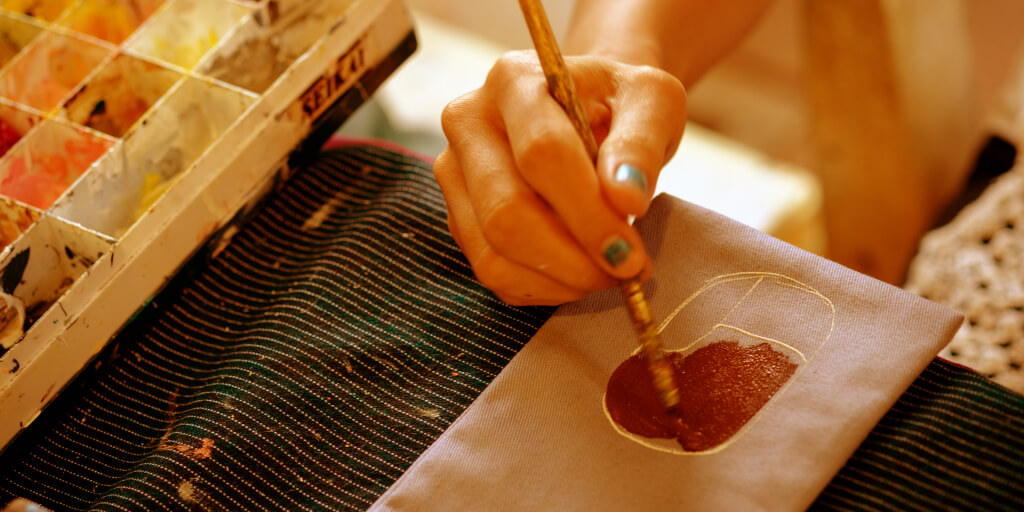
What is Art Therapy and What are the Benefits?
So what exactly is art therapy?
Art therapy is a method that psychologists and trained professionals use to help patients describe their feelings. This type of therapy can take many different forms and can be tailored to each person.
It is also used for helping people to reduce:
- Anxiety
- Depression
- PTSD
- Many other psychological disorders
The therapeutic benefits of art are not new. In fact, creative expression through art is well known for its use in psychology.
Certain professional psychologists and psychiatrists are licensed to practice artistic therapy. This means they have been trained to instruct patients during sessions. They are also qualified to determine if the art produced during these sessions has any underlying meanings or connotations.
Oftentimes, it is easier for patients to express their feelings through the creation of art. This is especially helpful for people struggling with overwhelming emotions that are difficult to describe with words. This type of therapy provides patients with a creative communication tool.
So if you choose to opt into artistic therapy, what kind of benefits should you expect to see?
Art therapy can help patients improve their self-management. Patients may struggle with addiction to substances or practices because they are avoiding dealing with their feelings. It also provides a creative outlet to work through those feelings in a safe space.
Artistic therapy can also help reduce the symptoms of depression. Freeing the creative spirit works wonders for boosting your mood. Setting aside time for creative therapy gives patients something to look forward to. Studies show that creating art can release chemicals in the brain that create balance and calm. Restoring chemical imbalance is one of the keys to beating depression.
Studies also show that art therapy can help patients improve their communication skills. It is not always easy to communicate complicated and deeply buried feelings.
Practicing artistic therapy teaches patients to learn how to express themselves in order to reach out to others.
Creative therapy can also play an essential role in reconciling with past traumas. After traumatic events, people often have a hard time recovering. Regardless of the source of the trauma, art therapy can help patients address their traumas. The creative process helps them express their feelings about the trauma so that they can move forward with their lives.
Unsurprisingly, this also means that this specific therapy can help reduce stress. Instead of channeling stress into negative habits, like overeating or drinking alcohol, artistic therapy provides a creative outlet for patients' stress. Many patients begin to look forward to art therapy sessions as a way to work out the stress of the day.
Studies show that art therapy helps patients build self-esteem. Creating art gives patients self-awareness in social situations. This increase in self-awareness can boost patients' self-esteem and overall confidence.
Artistic therapy is a great way to create a positive distraction. Sometimes, patients are not ready to talk about their feelings. Creating art provides a creative distraction so that patients can come to terms with reality at their own pace. Art therapy never rushes the process and gives patients control over their lives.
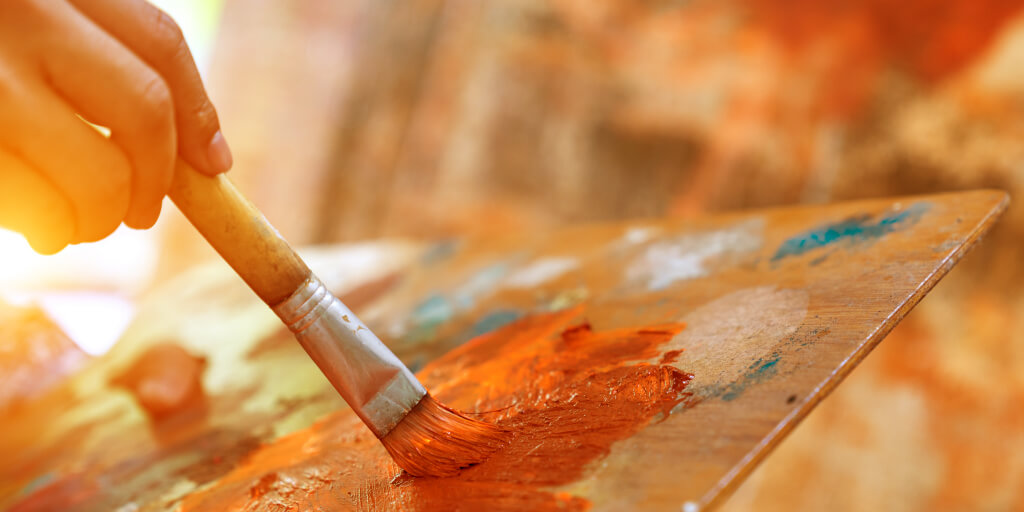
Different Types of Art Therapy
Pursuing art therapy doesn't require any art skills. One of the best things about this therapy is that there are so many different types of art available. This means you can customize your therapy to fit your personal style. You don't have to worry about being a Picasso, either; you can create at your own pace and style without judgement.
If you do a quick internet search to figure out which type of creative therapy you prefer, you will find that there are a variety of options available.
Painting
Painting is a creative outlet that doesn't require any skill. There are no rules for painting. Complex feelings are sometimes can be easier to describe when there are no limits to what you can communicate. When you are painting, the emotions can flow freely, in fluid motions. You can try art therapy with acrylic paints, watercolors, finger painting, or even spray paints.
Drawing
Drawing is another type of therapy. This method is a little bit more structured than painting. You can use many different supplies to create your drawings. The variety of supplies available include pencils, pens, crayons, or even pastels. Typically drawings are made on paper, instead of canvas.
Sculpting
Sculpting is another technique that can be used. Therapy with sculpture is radically different than drawing or painting. Sculpting allows you to express in a 3D form. Emotions aren't simply described in two, flat dimensions. Instead, emotions can be approached from multiple angles. You can sculpt with paper mache, clay or other materials. You can also carve and decorate the sculptures with other items to more accurately describe your emotions.
Collages
Creating a collage is also a great form of therapy. Instead of having to generate your own drawings or your own forms, you can use pictures and other elements to describe your emotions. This is especially helpful for patients who have a hard time getting started. Making a collage can help start the conversation on the road to healing.
Writing
Art therapy can also include writing. Writing can give you a certain freedom to express your emotions. If you are struggling to verbalize your emotions, writing is another great starting place. Journaling is one of the most common forms of art therapy.
Photography
You may not guess that photography can also be used as a form of therapy. To help work through emotions, patients use or take photos that represent their memories. Then, these photos can be digitally reconstructed, essentially creating a new version of reality. This can help re-frame your emotions with a more positive-focused framework.
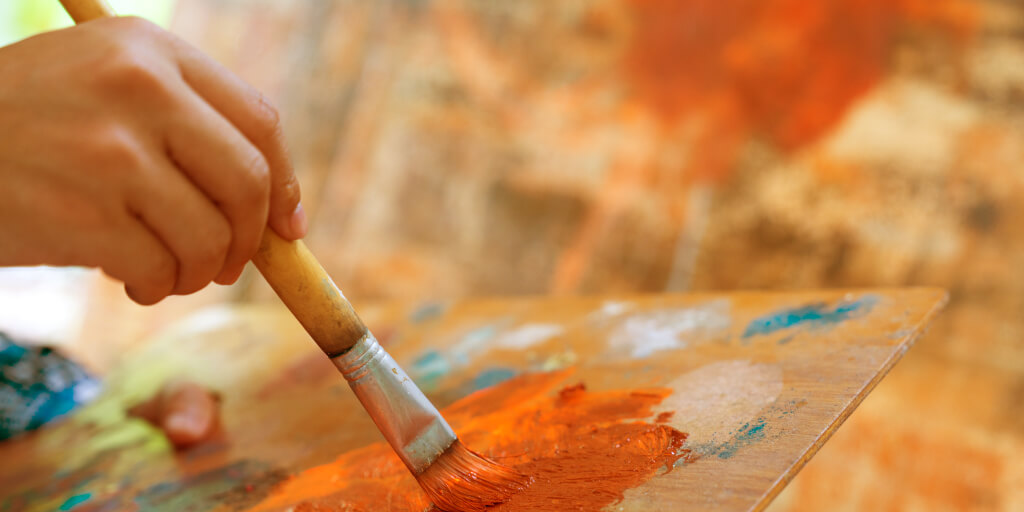
How Can You Try This Therapy at Home?
There are many ways that you can try artistic therapy at home. To get all of the benefits of art therapy, you don't need to schedule a visit to your psychologist.
Instead, you can choose from an enormous list of at-home art therapy activities. Doing a quick internet search will yield many results. Here are 10 at-home art therapy activities that you can choose from:
- Draw or paint your emotions
- Create an emotion wheel
- Make a meditative painting
- Journal
- Design a postcard (You don't have to send it)
- Attach a drawing or message to a balloon
- Paint to music
- Collage your vision of a perfect day
- Take photographs of things you think are beautiful
- Create a motivational collage
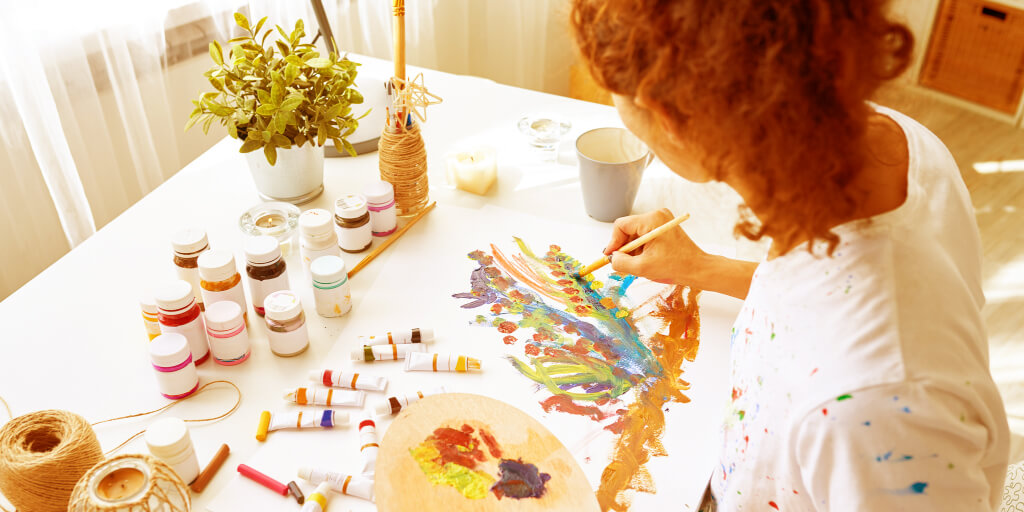
Can Art Therapy Help with Anxiety?
Art therapy is beneficial for a variety of reasons. However, it is especially helpful in treating anxiety.
But why is this?
Artistic therapy works in a number of ways to help reduce anxiety.
Art therapy calms your nervous system. Typically, art activities are calming. Many patients feel like they are in a meditative state. Because art therapy brings a sense of peace and stillness, it is easy for many patients to process complex emotions and experiences. This helps you transform and resolve deep-rooted conflicts that you struggle with. A calmer nervous system greatly helps reduce anxiety and tension
Artistic therapy encourages self-expression. This helps reduce anxiety by creating a safe space to belong in. Many people often struggle with an inner critic. Creating a safe environment is key to feeling open to processing difficult emotions. Being open with how you feel is essential to help reduce anxiety.
Art therapy also increases self-awareness. This goes hand-in-hand with increased self-expression. Allowing the mind to complete creative freedom allows us to uncover a true sense of who we are. The creative process also helps us identify emotions that may be lurking in our subconscious. Exposing and resolving these hidden emotions helps reduce anxiety.
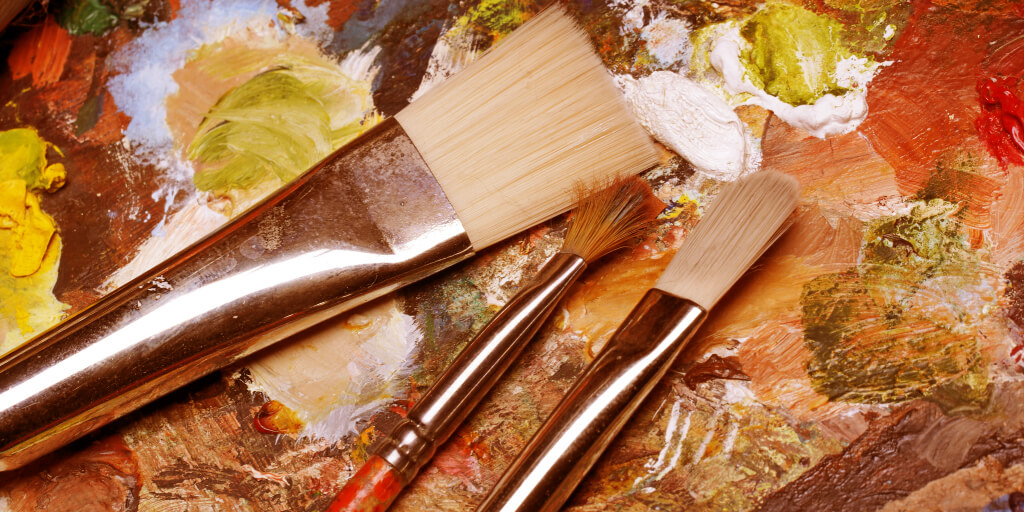
Why This Therapy is Good for the Brain
Art therapy isn't just beneficial for those who struggle with anxiety. It can also help reduce the symptoms and progression of some degenerative diseases.
Studies show that artistic therapy can improve cognitive functions in patients suffering from Alzheimer's. Creative therapy helps to revitalize the neural pathways and unlock memories that are often consumed by Alzheimer's.
The calming nature of art therapy also helps reduce irritability and aggression so often seen in Alzheimer's patients. It provides a creative outlet that allows patients to express feelings and emotions when their other senses may be ineffective at communicating.
The benefits of artistic therapy aren't limited to reducing anxiety. Creative expression through art therapy can bring a meditative peace to your life. It can help unlock emotions and feelings that we often can't communicate in any other way. Next time you're feeling a bit stressed, try picking up some colored pencils and practicing therapeutic art therapy.
Sources:
https://www.psychologytoday.com/us/therapy-types/art-therapy
https://arttherapyresources.com.au/8-types-art-therapy-help-clients/

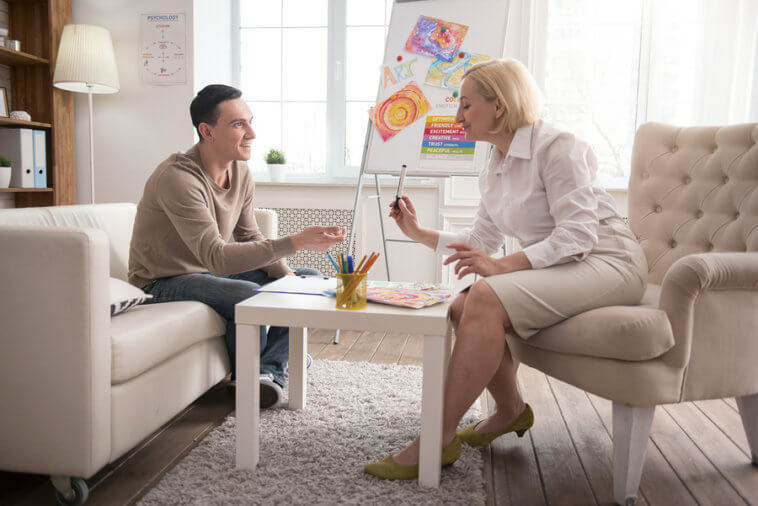


Comments
Loading…